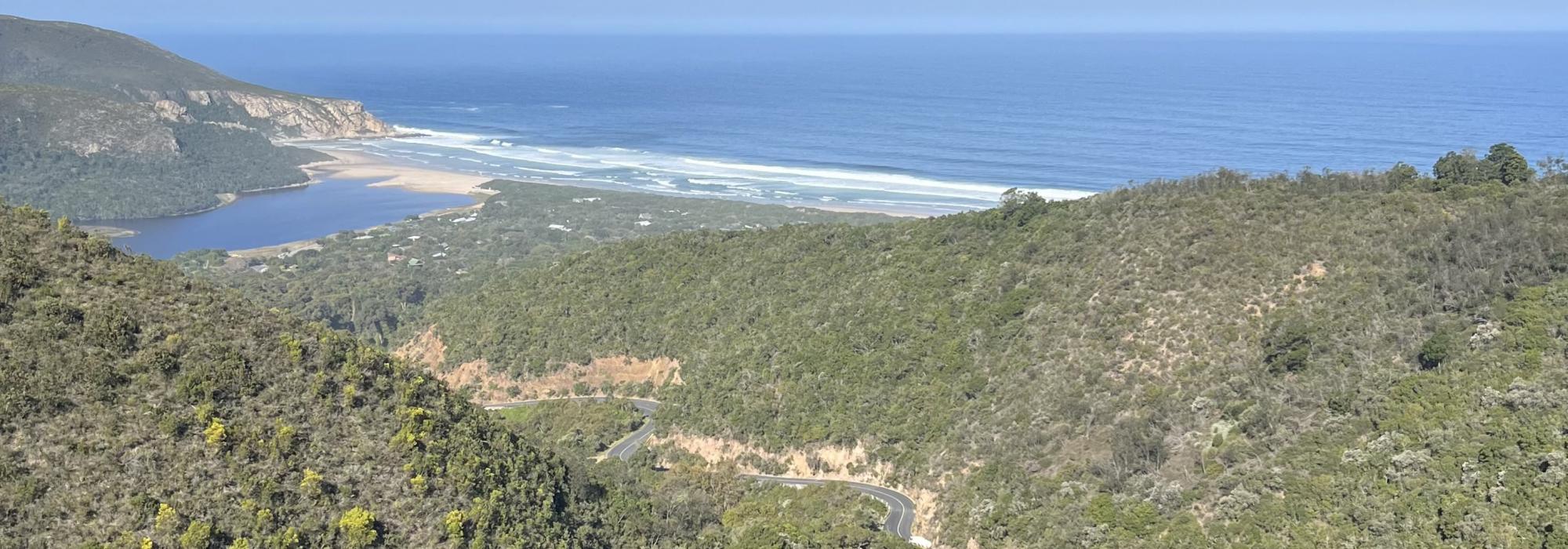
Report: Studying insects in South Africa
With the generous support of the Gerry Grimstone Award, I was fortunate to be able to spend eight weeks of this past summer in the beautiful village of Nature’s Valley, located in the Garden Route region of South Africa. Nature’s Valley is, in my opinion, South Africa’s best kept secret. Driving down to the village along a winding road one passes ancient, unfathomably tall trees growing beside the densely-wooded and secretive Kalander Kloof (kloof meaning stream in Afrikaans). The Kalander Kloof merges with the much larger Groot River – ice-cold, tannin-stained water flowing from the Tsitsikamma Mountains which lie to the north of the village. The Groot River opens up into a picturesque lagoon which, in the worst of weather, laps against the most riskily-sited houses of the village.
The Nature’s Valley Trust’s intern programme provides an ideal opportunity to practise first hand a myriad of practical conservation and monitoring methods. As an example, in my first week I was tasked with trekking to the neighbouring river mouth (the Sout River) and collecting fishermen’s bins – bins upkept by the Nature’s Valley Trust to provide an alternative to discarding used fishing line, swivels, hooks and other fishing equipment on the beach where it could harm vulnerable wildlife. While it became clear that this was the least desirable chore on the monthly rota given the general unsavouriness of the bins’ contents, the camaraderie borne of the shared anguish in unravelling metre upon metre of tangled fishing line still made it an enjoyable experience. I also came to cherish my outings to the Sout River mouth; sightings of African fish eagles, the endemic and threatened Knysna woodpecker, vast pods of dolphins, and the southern right whale were guaranteed to improve a day.
Another activity on the programme was conducting surveys called miniSASSes, which stands for Stream Assessment Scoring System. These surveys involve collecting samples of aquatic invertebrates by standing in the flowing water and disturbing the sediment so that any unfortunate benthic creatures are carried downstream into a net. Before being released back into the river the animals are identified, with each taxonomic group (such as caddisfly larvae, dragonfly larvae, and water beetles) carrying a certain number of points depending on how tolerant that group is of polluted water. The greater the number of points relative to the number of groups found, the better the quality of the water course. In the end, miniSASSes turned out to be just as much a test of self-discipline as a test of invertebrate identification skills; submerging your lower legs for five minutes in the Groot River’s cold, cold water is not for the faint-hearted!
Alongside these opportunities, the programme also allots time for our own research. I have long been interested in invertebrates, and have previously published papers on the taxonomy and ecology of certain European species. South African entomology, however, was an exciting new challenge! Nature’s Valley lies within the Cape Floristic Region, one of the world’s six floral kingdoms and easily the smallest. For its size, the degree of plant diversity and endemism is unparalleled, and the vast majority of this diversity is in the fynbos biome, a unique heathland-like habitat. Given how special the fynbos is, and how it is threatened by numerous stressors including increased fire risk from climate change and recreation, I dedicated a lot of my time to studying its invertebrate communities.
Despite the notability of the fynbos’ plant assemblages, the invertebrates in this biome are poorly-studied. Although increased fire frequency is one of the threats faced by the fynbos, a regular fire cycle is still essential for a healthy fynbos ecosystem, and in some places is used as a habitat management tool. Yet we still have insufficient knowledge regarding the post-fire recovery of invertebrate communities, which is one of the questions I am hoping to answer by establishing a long-term monitoring project. I also wanted to find out whether a fynbos restoration programme – taking place in the heart of Nature’s Valley itself – has had a noticeable impact on invertebrate communities and is accurately emulating natural primary fynbos.
To these ends, I deployed numerous pitfall traps in and around the village. These pitfall traps consisted of a small plastic pot (about 15 cm in diameter and in depth) sunk into the ground with the rim flush with the soil surface, waiting for unsuspecting invertebrates to come along and fall in. Each week I would check the traps, and tally and identify all the invertebrates within. This was not a trivial task, seeing as by the end of the project I had caught almost 5,000 individual invertebrates. However, the data were invaluable, and allowed me to write a 14-page scientific paper reporting what I’d found. By the end of the year, this paper will be published in the first issue of the incipient scientific journal Nature’s Letters, produced by the Nature’s Valley Trust. I will also take on the role of junior editor, but rest assured that my paper will be thoroughly peer-reviewed by an unbiased third party!
Alongside the intern programme, I also took advantage of the weekends to take in some of the best parts of the Garden Route outside of Nature’s Valley. These experiences came together to make this summer my most memorable and fulfilling yet. I am indebted to Lord Grimstone and Merton College for providing me with the financial means to take this trip, one that I shall savour long into the future.